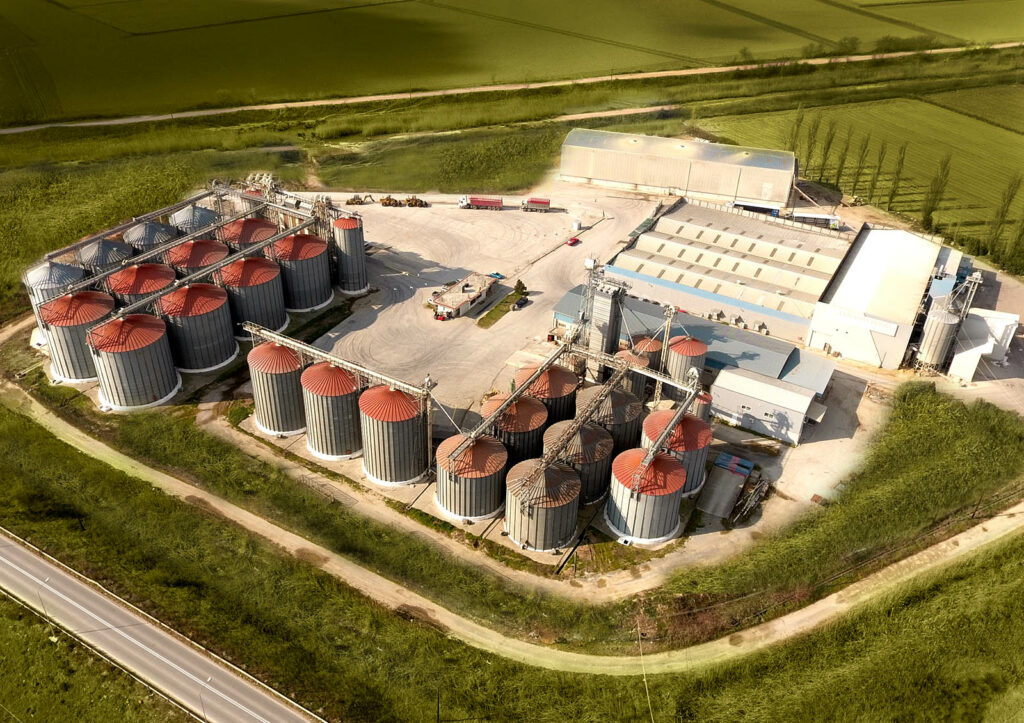The highest positions in the primary sector are occupied by rice production, which exported to the West and East from Central Macedonia.
The rice fields of Central Macedonia are fed by the brackish water of Axios River that waters the riverside forests, the forests of the green islands on which migratory birds rest and otters make their nests.
The unique taste of rice that the golden plain of Central Macedonia produces and makes the product stand out in the global market is due to the sea water filling the rice paddies, which sink from one to two meters below its surface.
The flat plates, known as “pans,” resemble a spread-out carpet with geometric shapes. The oldest farmers remember dipping their feet high while wearing tarpaulins in these rice paddies.

“The systematic production of rice started in the region in the 1950s. In 1958, a little later, the construction of the large land reclamation works began for the plain of Central Macedonia, which continue to irrigate the region to this day. However, our Cooperative was founded in 1917 in order to meet the needs of farmers for storage facilities and is now one of the oldest in Greece. Since then, a lot has changed. Everything. The cooperative has grown, produces, standardizes, and exports products and varieties of rice, has a silo and warehouses”, says Christos Gkatzaras, President of the Agriculture Cooperative of Halastra and President of Interprofessional Organization of Hellenic Rice.
“Today we use all modern methods. With the use of smart farming, we can know how and how much we will intervene and in what way. We also have the latest means of spraying and modern tractors”, says Gkatzaras.
Rice cultivation in western Thessaloniki that started the upward trend in the 60’s, now covers 70-75% of the domestic rice production. In the region of Halastra, 55% of Greek rice is produced, and in the whole of Central Macedonia, 70% is produced. In total Greece produces 150-170 thousand tonnes of hulled rice. Of this, 30% is sold to the domestic market and the remaining 70% is exported, mainly to the Arabian Peninsula,(last year Greece acquired the Jordanian market), Turkey, the Balkans and the rest of Europe. With the annual national foreign exchange from exports amounting to over 100 million euros, exports reach 80%, making rice one of the flagships of the primary sector.
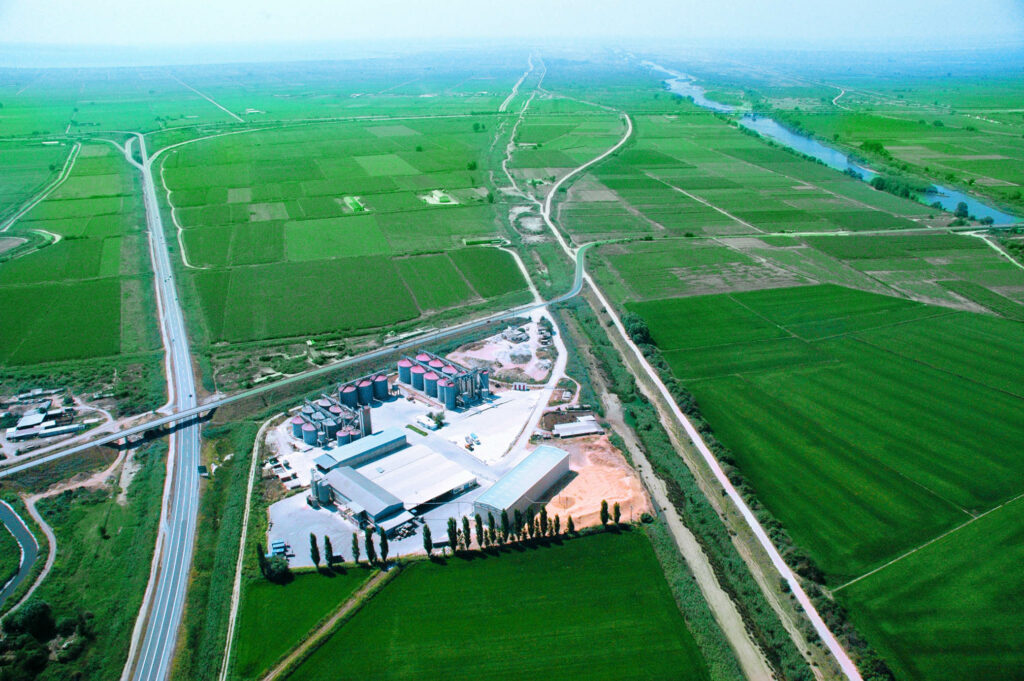
But more importantly, the prospects for Greek rice are huge and the representatives of the rice producers of western Thessaloniki state that “we can meet any export need that exists”. Its undeniable quality is what has succeeded in restoring confidence in the countries of the Middle East. The variety of medium grain rice is in demand in Israel, Lebanon, UAE, and especially in Dubai, a large market with high individual consumption. Greek exports need it as a two-way trade.
The valley is blessed, and the ecosystem of the Axios Delta benefits from the rice fields, particularly important for the fauna of the area. This is where the Gallic and the Loudias rivers flow into the valley.
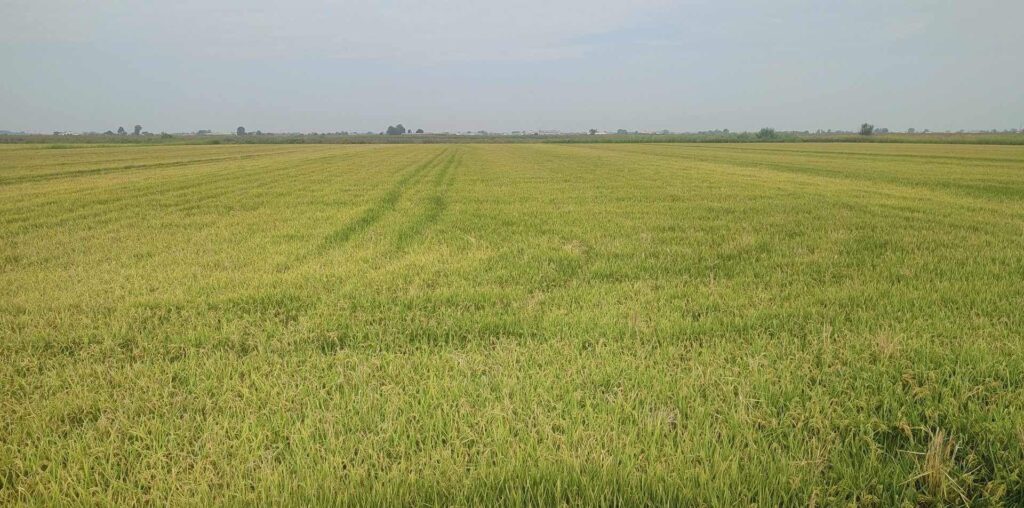
The water-soaked “pans” act as artificial seasonal wetlands. Here nature has taken a leading role and proves once again its wisdom.
In May, which is considered the peak of the breeding season of the birds, the rise fields are flooded with water. The waterlogged fields are teeming with small invertebrates that feed the white tailed godwits, steelcocks, silver pelicans, gulls and, of course, their chicks.
“We grow rice with all the specifications and standards set by the European Union,” says Mr Gatzaras. Besides, through the European EuRice program in which Greece participates and of course the great the major producer Thessaloniki, consumers are informed about the high quality of rice produced in Europe with strict standards. The EuRize programme (https://www.europeanrice.eu) aims at the sustainability of rice production in Europe. The Agricultural Partnership of Thessaloniki and the Regulatory Authority for PDO Valencia Rice in Spain, as Greek rice, together with Spanish rice, are its main ambassadors. They have been participating in events held in the last two years in the framework of the European quality and nutritional value of Greek rice.
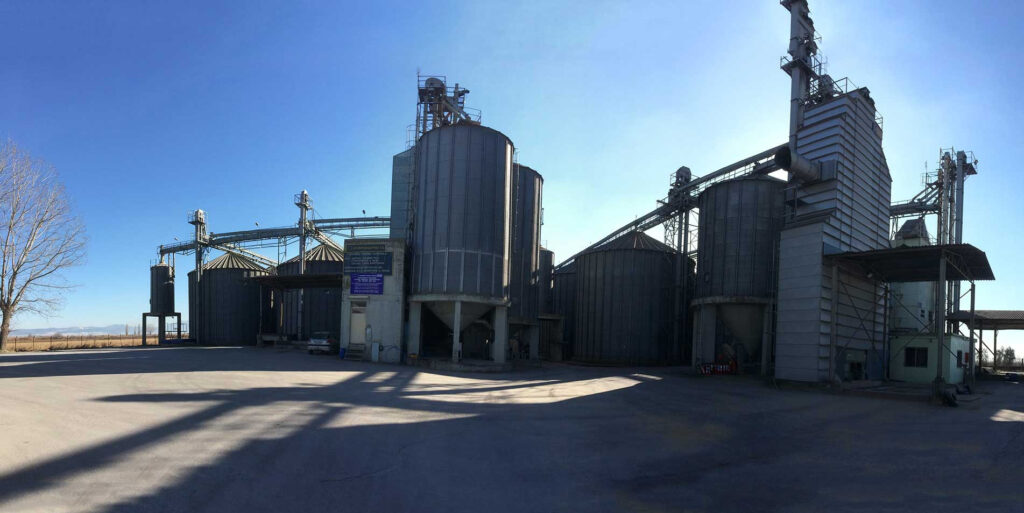
In the silos of the 1st Agricultural Cooperative of Halastra
In the privately owned land of the 1st Cooperative in a total area of 52.000 sq.m, located on the banks of the Axios River, 28 silos and warehouses operate with a total capacity of 35,000 tonnes, three drying plants and a modern standardisation and packaging unit. “Our Cooperative has 530 registered members , but 350 are active. However we also serve non-members in agricultural supplies, receipt, processing,printing of products. We export raw and milled rice to
Turkey, Poland, Balkan countries and lately we have made significant export steps outside the EU to Israel, Lebanon, Jordan, the Middle East and Arab Emirates”, stresses the President of the 1st Agricultural Cooperative of Halastra.
The cooperative with modern facilities, storage silos, drying plants with state-of-the-art technology produce and manage more than 40,000 tons of rice per year.
Since 2011, it has been implementing a HACCP system and is certified according to the ISO22000:2005 international standard for food safety management systems.
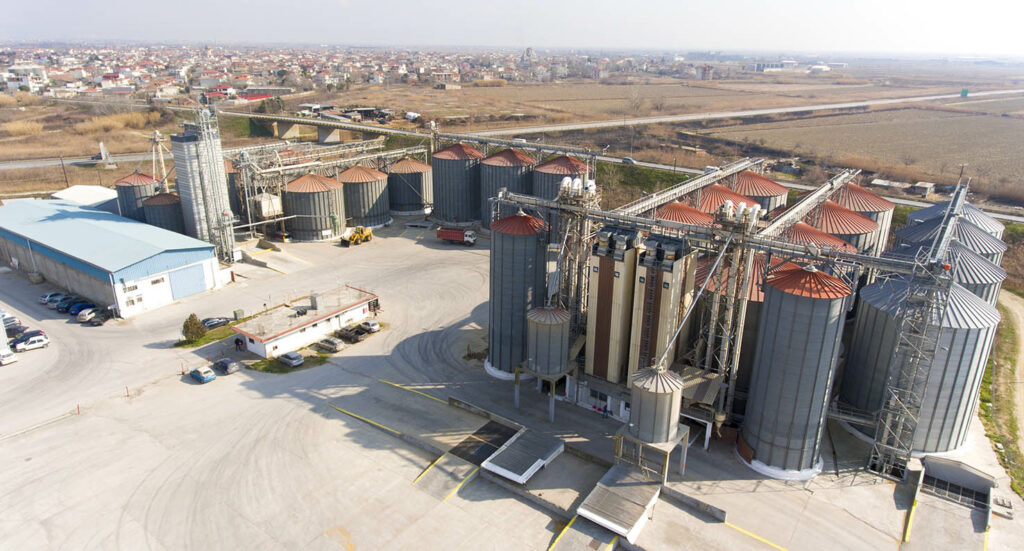
The brand name of the valley and the categorization of rice
The modern equipment and facilities , new technological methods and the staff training contribute to the high quality of products and services of the Cooperative.
The aim now of the President of the Interprofessional Organization of Greek Rice, Christos Gatzaras is the categorization of Greek rice and the control of imports, so that consumers know what they are buying. And as the President states: “ The Interprofessional Organization was founded by Leonidas Kouimtzis who was who was originally its President. Leonidas’ contribution to the industry was immense. We are trying to continue his work. In cooperation with the relevant bodies, we aim to have a complete record of imported rice, including the way in which it is imported, transported, and stored, and to control these processes. We still want to ensure the Greek brand name and make the classification of the Greek rice varieties. We aim to know what the consumer is buying”, he explains.
A strong breeze from the Thermaikos makes the water in the “pans” with the rice pulsate. In the delta of the Axios, the valley of Thessaloniki is located, one of the richest ecosystems in Europe. Everything works together in perfection there, with the balance that only nature can achieve.
2nd Agricultural Cooperative of Halastra: The logistics of rice producers
The facilities of the Cooperative include so far 4 dryers with a capacity to dry 15 tn/h, 42 silos with a capacity of 1000 tn and two 80 tn bridge blast furnaces. All silos are equipped with sensors to measure the temperature of the stored product as well as an individual ventilation system at the base. Through the Recovery and Resilience Plan the facilities will be further developed with the acquisition of 9 more silos and dryers. The total investment will exceed EUR 3.5 million.
“We offer growers drying, storage and disposal of the product abroad. We have the logistics to store and manage the product”.
The 2nd Agricultural Cooperation of Halastra has set as its main objective the availability of the domestic and international market with top quality rice. “ We support our members in developing and improving safety-oriented production processes and protection for people and the natural environment. Our agronomic service undertakes the supply with the appropriate agricultural supplies and provides reliable advice on how to cultivate. We are specialized in drying and storage of rice and we are confident that we have the best quality rice on the market”, says the President of this Cooperation Vasilis Koukourikis.
The co-operators, 500 members of which 350 are active, produce 40,000-45,000 tons of rice per year. They export milled rice to Bulgaria, Turkey and some quantities to Spain and France.
In this fertile special valley, rice monopolizes the nutritional potential of the brackish waters. It’s 5 plus 1 the varieties of rice that mostly thrive in western Thessaloniki. Claudio, mare, CL26 and Olimpiada are grown in the Indica category. In the Japonica category the varieties are: Ronaldo, Luna and Gloria. Ronaldo is the preferred variety by 75% of the producers.
As Mr Koukourikis stresses “The amount of rice produced in our region can meet any export needs, since here we have a large number of ¾ of the total quantity of rice exported by our country”.
Even during the necessary crop rotation to grow nitrogen in the soil, it is found that few plants are able to grow in this particular growing environment.
It is this unique ecosystem, the decades-old farming tradition that continues to supply domestic and foreign markets, and the nutrient-rich water that fills the rice fields of the valley. It is the Mediterranean breeze that flavors every grain, every spoonful of rice.
